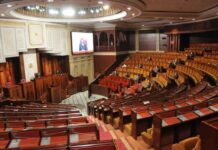Rabat is taking center stage this week with a landmark event that could reshape its role in Moroccan tourism. From November 13 to 16, more than 220 Dutch tourism professionals have gathered in the capital for the annual congress of the Netherlands Association of Travel Agents and Tour Operators (ANVR)—a first for Morocco. The event, organized in collaboration with the Moroccan National Tourist Office (ONMT), signals a major push to position Rabat as a prime gateway for Dutch travelers.
Held under the theme “Connecting,” the congress brings together a diverse network of industry leaders—ranging from tour operators and airlines to insurers, financial institutions, academics, and media representatives. For Morocco, and Rabat in particular, it’s a high-stakes opportunity to showcase what the city has to offer and to strengthen its foothold in the Benelux tourism market.
ONMT Director General Achraf Fayda called the congress a pivotal milestone in Morocco’s strategy to diversify its tourism appeal. He emphasized the symbolic importance of hosting such an event in Rabat, a city rich in heritage and recognized as a UNESCO World Heritage Site, but often overshadowed by more established destinations like Marrakech or Agadir. By drawing key decision-makers from the Dutch travel industry, Morocco hopes to embed its destinations more deeply into the programming and future planning of major European tour operators.
The timing couldn’t be better. Tourist arrivals from the Benelux region have surged since the beginning of the year. By the end of August 2025, Dutch arrivals were up 14% and Belgian visitors rose by 11% compared to the same period in 2024. The ONMT is keen to maintain—and accelerate—this momentum.
Capitalizing on the occasion, Transavia launched a new direct route between Amsterdam and Rabat on November 13, offering two weekly flights on Thursdays and Sundays. The new air link is expected to boost Rabat’s appeal for short getaways and business tourism, while also serving as a launchpad for multi-city trips to northern and central Moroccan destinations like Tangier, Chefchaouen, Fes, and Meknes.
This initiative is part of a broader ONMT strategy to target high-potential European markets. By hosting high-profile industry gatherings and expanding strategic air connections, the Office is working to give Rabat long-term visibility and relevance on the international tourism map. The goal is clear: to move Rabat beyond the shadows of traditional hotspots and into the spotlight as a destination in its own right.





